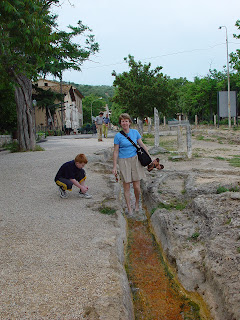
Our most relaxing overseas holiday – ten days in Kota Kinabalu (KK) in the north east corner of Borneo. We stayed in the Sutera Harbour Resort in the Magellan wing and were treated liked royalty. The staff was so friendly and helpful, the rooms were luxurious, the food was delectable and to top it all off it wasn’t expensive. This resort also boasts a golf course with night lighting, 5 swimming pools, a 10 pin bowling alley, cinema, marina and is only a five minute shuttle ride from the heart of KK.
In KK itself, the shopping was great. There were plenty of clothes, shoes, electronic gear and all at great prices. Air conditioned shopping centres such as Centrepoint, KK plaza, Merteka Plaza had a huge variety of shops. We were fortunate enough to visit during one of their Mega sales. These occur in March, August and December where you can get up to 70% discount off already unbelievably cheap prices.
There are also plenty of fresh seafood places to eat at in KK. Kampong Ayr is an open air market and impressed us with the quality and the prices. There are also many restaurants and food halls in the shopping centres which offer a large variety and great prices.
If you’re into nature trips then t
 his has it all as well. The Tunku Abdul Rahman Marine Park is just 20minutes from the resort. The waters are crystal clear and brimming with marine life. Snorkeling reveals all types of coral, sea cucumbers and colourful fish. Visiting the orangutans is another highlight. There are two places in Sabah where you can see rehabilitated orangutans – Sandakan (about an hours flight away) or Rasa Ria resort (about an hour away by shuttle or taxi). At Rasa Ria we saw two cheeky apes – one with the name of “Tiger Wud” because of his penchant for finding golf balls at the nearby golf course.
his has it all as well. The Tunku Abdul Rahman Marine Park is just 20minutes from the resort. The waters are crystal clear and brimming with marine life. Snorkeling reveals all types of coral, sea cucumbers and colourful fish. Visiting the orangutans is another highlight. There are two places in Sabah where you can see rehabilitated orangutans – Sandakan (about an hours flight away) or Rasa Ria resort (about an hour away by shuttle or taxi). At Rasa Ria we saw two cheeky apes – one with the name of “Tiger Wud” because of his penchant for finding golf balls at the nearby golf course.No trip to KK is complete without a trip to Mount Kinabalu. For the adventurous an overnight stay and early morning climb to the summit to see the sun rising is a must. For those of us with a little less energy then a stroll around the botanic gardens at Mount Kinabalu can be rewarding with the number of orchids, pitcher plants and , if you’re lucky, a sight
 ing of the rafflesia. This is the world’s largest flower, taking ten months from bud to flower and only staying in bloom for 7 days.
ing of the rafflesia. This is the world’s largest flower, taking ten months from bud to flower and only staying in bloom for 7 days.Kota Kinabalu is a great destination for Australians – it is only a 5 hour flight, the exchange rate is great and the people are so hospitable and friendly. We would love to go back but are so worried that it won't be as good - maybe we will live with the memory.





